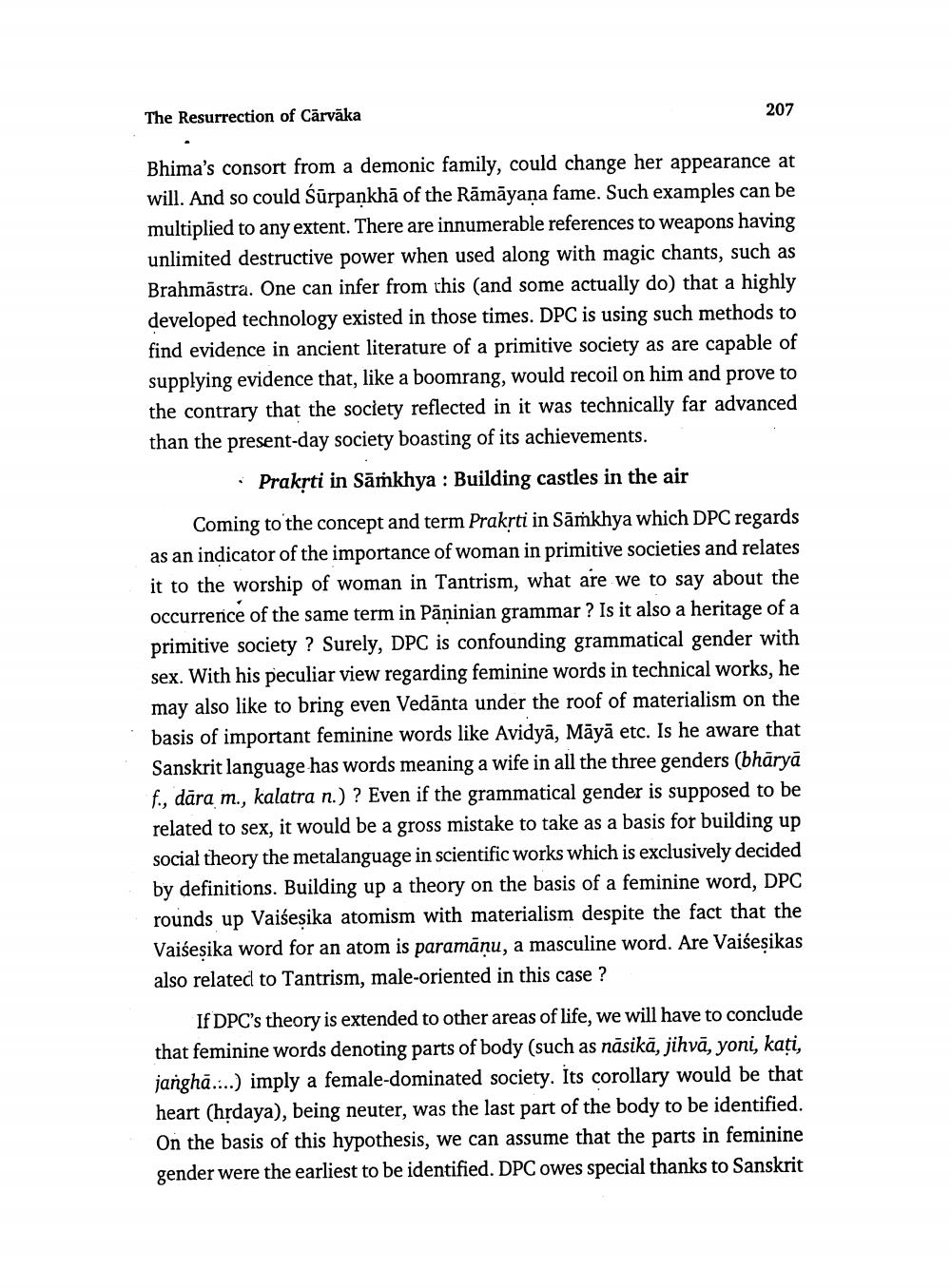________________
The Resurrection of Cārvāka
207
Bhima's consort from a demonic family, could change her appearance at will. And so could Sūrpankhā of the Rāmāyana fame. Such examples can be multiplied to any extent. There are innumerable references to weapons having unlimited destructive power when used along with magic chants, such as Brahmästra. One can infer from this (and some actually do that a highly developed technology existed in those times. DPC is using such methods to find evidence in ancient literature of a primitive society as are capable of supplying evidence that, like a boomrang, would recoil on him and prove to the contrary that the society reflected in it was technically far advanced than the present-day society boasting of its achievements.
· Praksti in Sāṁkhya : Building castles in the air Coming to the concept and term Prakrti in Samkhya which DPC regards as an indicator of the importance of woman in primitive societies and relates it to the worship of woman in Tantrism, what are we to say about the occurrence of the same term in Paninian grammar? Is it also a heritage of a primitive society ? Surely, DPC is confounding grammatical gender with sex. With his peculiar view regarding feminine words in technical works, he may also like to bring even Vedānta under the roof of materialism on the basis of important feminine words like Avidyā, Māyā etc. Is he aware that Sanskrit language has words meaning a wife in all the three genders (bhāryā f., dāra m., kalatra n.) ? Even if the grammatical gender is supposed to be related to sex, it would be a gross mistake to take as a basis for building up social theory the metalanguage in scientific works which is exclusively decided by definitions. Building up a theory on the basis of a feminine word, DPC rounds up Vaiseșika atomism with materialism despite the fact that the Vaiseșika word for an atom is paramāņu, a masculine word. Are Vaiśeșikas also related to Tantrism, male-oriented in this case ?
If DPC's theory is extended to other areas of life, we will have to conclude that feminine words denoting parts of body (such as nāsikā, jihvā, yoni, kati, janghā....) imply a female-dominated society. Its corollary would be that heart (hrdaya), being neuter, was the last part of the body to be identified. On the basis of this hypothesis, we can assume that the parts in feminine gender were the earliest to be identified. DPC owes special thanks to Sanskrit




